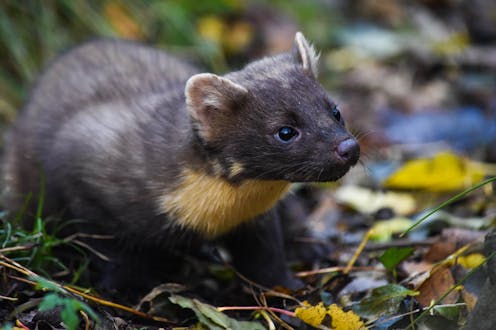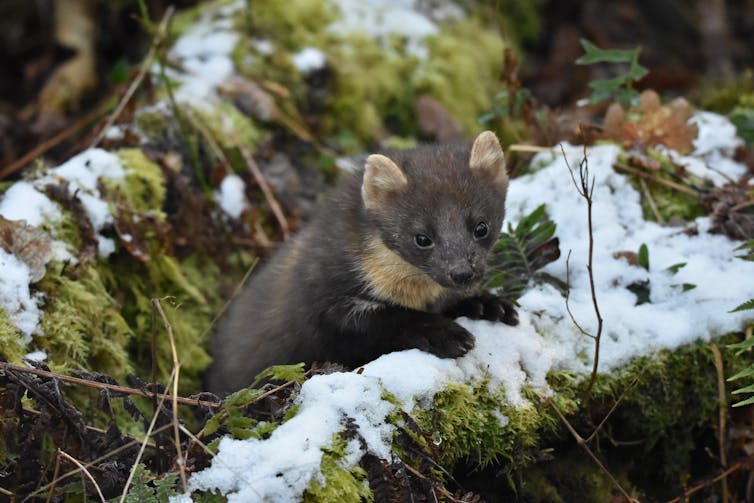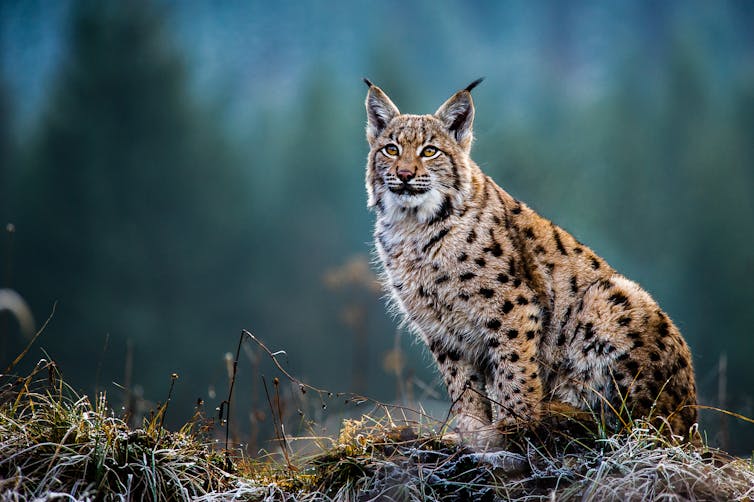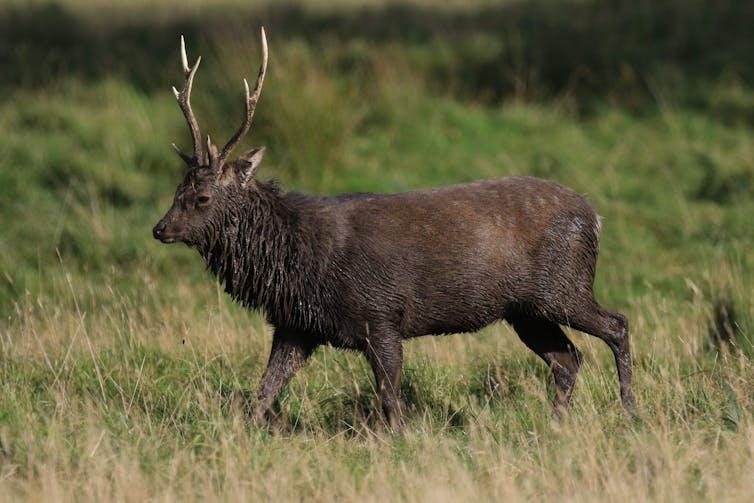
As humans have spread out across the planet we have killed larger predators and other species we fear and compete with, confining them to history or to tiny remnants of their vast ranges. This process was particularly successful across Britain and Ireland, where the wolves and lynx people once lived alongside are long gone.
At the same time, humans have transported species we value outside of their native ranges. By introducing animals, plants and microorganisms into ecosystems where they did not evolve, we have inadvertently created invasive species which drive the extinction of native ones by eating, competing with and exposing them to new diseases. Over the last century, invasive species were the main cause of vertebrate species going extinct.
Mounting evidence suggests those once-hated native predators are essential for regulating invasive prey. In fact, our new research shows that the eradication of native predators has partially caused the invasive species crisis we face today. But we also found that all is not lost. By examining a series of surveys which included public sightings of grey squirrels and pine martens – a small carnivore and member of the weasel family that was hunted until legal protection came into effect in the 1980s – between 2007 and 2019 in Ireland, we showed how the return of a native predator can cause the rapid decline of a long-established invasive species (the grey squirrel) over entire landscapes.
We studied populations of both species to discover features that determine the ability of a native predator to control an invasive species following restoration. These include the capacity of the predator to switch between prey, the failure of the invasive prey to recognise or respond to the threat of a newly recovered predator and the availability of areas that the prey can hide in to escape.

Naive prey and versatile predators
From wolves hunting non-native Corsican moufflon in the Mercantour mountains of southeastern France to red-banded snakes predating invasive bullfrogs in China, native predators tend to preferentially hunt invasive prey over their native counterparts by a factor of two or even three.
Understanding why this is the case can reveal when and where restoring native predators will help control an invasive species. For instance, sika deer are native to East Asia but became invasive in Britain, Ireland and across mainland Europe after they were introduced in the late 18th century. The Eurasian lynx, a predator of deer which was once widespread throughout Europe, was eradicated from most of its former range by the beginning of the 20th century. Like the grey squirrel with the pine marten, sika deer evolved in the absence of lynx and are likely to behave in a similar way when confronted with a native predator – by failing to recognise the threat and therefore not realising they should flee, for example.

Lynx tend to switch between the species of deer they hunt and have a proven ability to suppress deer populations. There are also no areas available to deer that lynx cannot also access. These factors combined suggest that restoring lynx populations will benefit ecosystems in which sika deer are invasive. Lynx are likely to have a bigger effect on these invasive populations where alternate prey (like roe deer) are scarce or absent, as in Britain and Ireland.

An ecological argument
The natural recovery of some large predators in mainland Europe, including lynx, bears and wolves, is well underway, challenging longstanding edicts on the pristine habitat and space requirements of carnivores. Despite intensive farming and urban sprawl, all it has taken for these species to recolonise their former range was for people to stop killing them. Surrounded by sea, extinct predators will not recover in Britain naturally. Any efforts to reintroduce them would require a societal consensus that does not exist at present.
Our research offers an ecological justification for restoring native predators: to help control and limit the spread of invasive species. But it would be naive to pretend this is the only important factor. Living alongside large carnivores comes with consequences, including occasional losses of livestock and pets. This cannot be ignored, but it can be reduced with proactive management.
If people are to accept the restoration of any native predator, there must be equal consideration of the benefits – like easing the damage caused by invasive species – and plans to mitigate the costs.
Joshua P Twining receives funding from the British Ecological Society and the Department of Environment and Conservation, NY.
Xavier Lambin receives funding from NERC, Forestry Commission England, Forestry and Land Scotland, Natural England, Scottish Natural Heritage, Cairngorms National Parks Authority, Leverhulme trust
This article was originally published on The Conversation. Read the original article.







